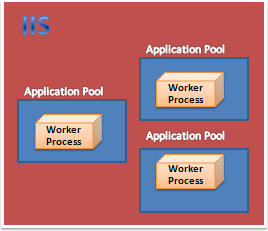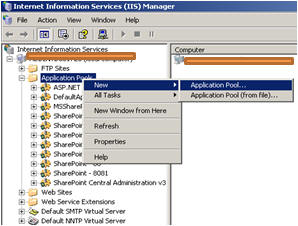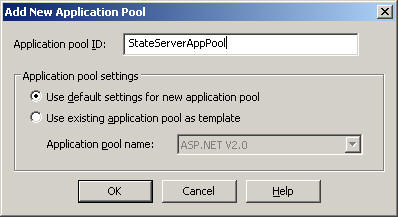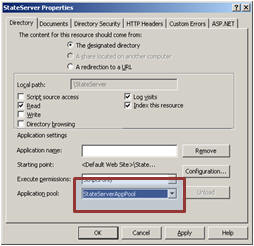Application Pool:-
- This is one of the most important things you should create for your applications in a production environment.
- Application pools are used to separate sets of IIS worker processes that share the same configuration.
- Application pools enable us to isolate our web application for better security, reliability, and availability.
- The worker process serves as the process boundary that separates each application pool so that when one worker process or application has an issue or is recycled, other applications or worker processes are not affected.

Identity of Application Pool:-
Application pool identity configuration is an important aspect of security in IIS 6.0 and IIS 7.0, because it determines the identity of the worker process when the process is accessing a resource. In IIS 7.0, there are three predefined identities that are the same as in IIS 6.0.
| Application Pool Identity | Description |
|---|---|
LocalSystem |
Built-in account that has administrative privileges on the server. It can access both local and remote resources. For any kind accessing of server files or resources, we have to set the identity of the application pool toLocalSystem. |
LocalServices |
Built-in account has privileges of an authenticated local user account. It does not have any network access permission. |
NetworkServices |
This is the default identity of Application Pool.NetworkServiceshas the privileges of an authenticated local user account. |
Creating and assigning Application Pool
Open IIS Console, right click on Application Pool Folder > Create New.

Give the Application Pool ID and click OK.

Now, right click on the Virtual Directory (I am using StateServer web sites) and assignStateServerAppPoolto the StateServer Virtual Directory.

So this StateServer web site will run independently withStateServerAppPool. Any problem related with other applications will not affect this application. This is the main advantage of creating application pools separately.